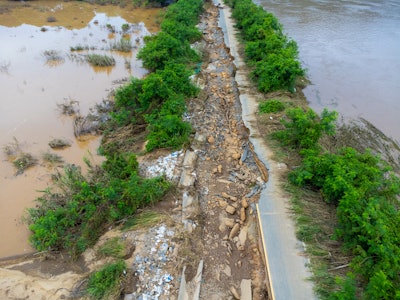
Last year there were twenty-seven separate weather or climate related disasters which resulted in more than $1 billion in damages. A not insignificant portion of those damages were to essential roads, bridges, and other transportation infrastructure. States hit hard by these events often expressed criticisms of the Federal Emergency Management Agency (FEMA) and how funds and other aid made their way where needed.
On July 24, 2025, Transportation and Infrastructure Committee (T&I) leaders introduced new legislation in the U.S. House that represents that largest overhaul of FEMA in many decades. These changes include returning the office to a cabinet-level agency, making it directly answerable to the President.
When disaster hits—whether from floods, wildfires, or hurricanes—road builders are often first in and last out. With the introduction of the FEMA Act of 2025, Congress has the potential to significantly change how recovery dollars are distributed and what’s expected in the reconstruction process. If you’re in the road building industry, here’s what you need to know.
Key Takeaways for Contractors and DOTs:
- Faster Funding, Fewer Delays
The Act creates new pathways for expedited reimbursements and quicker project closeouts—particularly for critical infrastructure like roads and bridges. - Unified Federal Review
Multiple agencies now operate under a single framework to approve rebuild projects, significantly reducing red tape. - Hazard Mitigation Made Easier
The law allows FEMA funds to integrate with other federal programs—great news for complex road projects with resilience components. - Resilient Design is No Longer Optional
Any rebuild or mitigation project must now align with the two most recent editions of hazard-resistant codes, including flood, fire, and seismic criteria. - No Dedicated Set-Aside for Roads, But a Strong Opening
Roads and bridges remain eligible under the “public infrastructure” umbrella, though competition for funds will remain intense.
The Bottom Line
If you're not building for resilience, you're building to be replaced.
The FEMA Act of 2025 puts real weight behind updated codes and disaster-resistant materials. Road builders, engineers, and DOTs who embed hazard mitigation into their designs will be first in line for funding, and less likely to face rebuilds down the line.
As the climate changes, expect funding eligibility to hinge more and more on how well projects are designed to withstand future risk.
Read a full, section-by-section summary of the new legislation here.




















